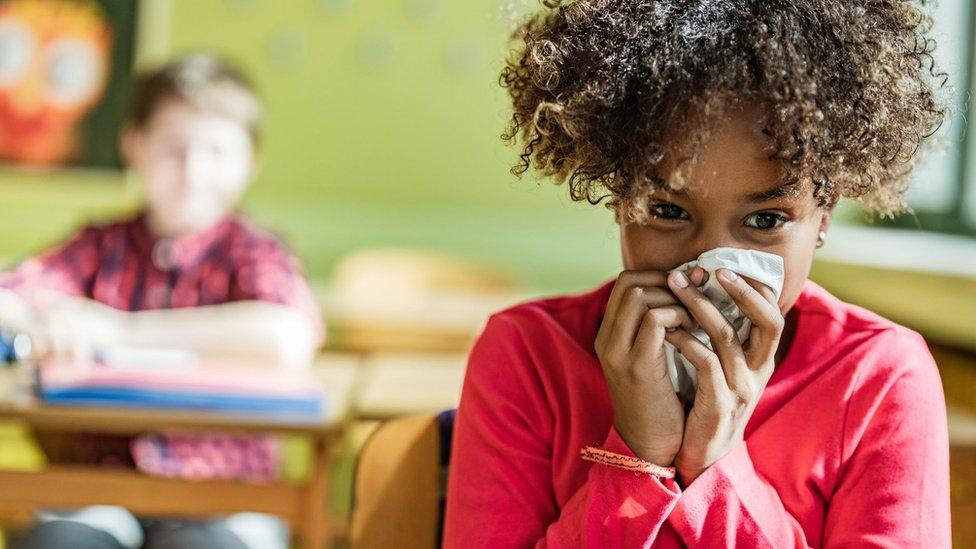Coronavirus: Children half as likely to catch it, review finds
- Published
- comments

Children and adolescents are half as likely to catch the coronavirus, the largest review of the evidence shows.
The findings, by UCL and the London School of Hygiene and Tropical Medicine, will feed into the debate about how schools are reopened.
Children also appear less likely to spread the virus, but the team said there was still uncertainty on this.
The UK government is expected to publish its scientific advice on schools later.
However, only England has announced that some primary children (Reception, Year 1 and Year 6) could return to the classroom, sparking concerns about safety.
It is already clear that children are at far less risk of becoming severely ill or dying from coronavirus.

In the UK, three children under 15 have died with coronavirus
However, two other key questions have proved harder to answer:
are children less likely to catch the virus?
are children less likely to spread it?
The researchers went through 6,332 studies from around the world - much of it not formally published - to try to get the answers. They identified only 18 with useful data.
These were a mixture of studies that tested how the virus spreads in schools or households through rigorous testing of contacts, as well as studies that test large numbers of people in a population for the virus to see who is carrying it.
The analysis showed children were 56% less likely than an adult to catch the virus when exposed to an infected person.
"Teachers worry about their children and I think it is incredibly reassuring the children they teach are half as susceptible to this virus," said Prof Russell Viner, from University College London and the Royal College of Paediatrics and Child Health.
However, the reason why is not clear.
There have been discussions about differences in children's lungs that make it harder for them to catch the virus or that they are exposed to more colds that are related to the coronavirus, which might lead to some degree of immunity.
Can children spread coronavirus?
The evidence was less clear-cut about how easily children spread the virus. For example, one study of 31 clusters of infections showed only three (10%) were started by a child. The equivalent figure in influenza is 54%.
However, the researcher said if children were less susceptible to the virus, they are also less likely to be the major source of infections.
Prof Viner added: "This supports the view that children are likely to play a smaller role in transmitting the virus and proliferating the pandemic, although considerable uncertainty remains."
He refused to be drawn directly on the political decision of reopening schools, but said he would be concerned if all the focus was solely on the health impacts to adults "and the harms to children of staying off school were devalued and not playing into the equation".
The advice given by the UK government's scientific advisors, called SAGE, is due to be published later.
However, the rival group called "Independent SAGE" has published its opinion, saying schools should not re-open until there is the ability to track the spread of the virus and test anyone coming into contact with infected people.
It also said the risk to pupils would be halved if reopening was delayed by two weeks as a result of cases reducing further.
Boris Johnson has indicated that 25,000 contact tracers, able to track 10,000 new cases a day, would be in place by 1 June.
Sir David King, who leads the group, said: "It is clear from the evidence we have collected that 1 June is simply too early to go back, by going ahead with this dangerous decision, the government is further risking the health of our communities and the likelihood of a second spike."
Follow James on Twitter, external

RISK AT WORK: How exposed is your job?
THE R NUMBER: What it means and why it matters
LOOK-UP TOOL: How many cases in your area?
RECOVERY: How long does it take to get better?
A SIMPLE GUIDE: What are the symptoms?
